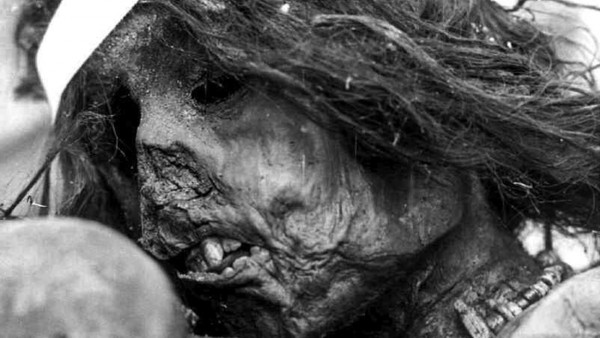
The Aconcagua boy died as part of an Incan ritual of child sacrifice called capacocha. Children and adolescents were taken to the tops of high peaks and left to die of exposure or killed outright; the Aconcagua boy was likely executed with a blow to the head. Several capacocha mummies have been found on mountains scattered throughout Inca territory, but the Aconcagua boy is "one of the best preserved," says Antonio Salas, a human geneticist at the University of Santiago de Compostela in Spain and an author of the new study. The boy died 5300 meters above sea level in "one of the driest climates that exist," Salas says. That gave him hope that the mummy might still contain traces of DNA.
It did. Salas and his team extracted the mummy's complete mitochondrial genome—comprising 37 genes passed down solely from the mother—from one of its lungs. Sampling an internal organ was a good choice for minimizing the risk of contamination, says Bastien Llamas, a geneticist at the University of Adelaide in Australia who studies ancient South American populations. In the years since the mummy was found, "you assume ... no one has touched the lung with their own hands, so there is no contamination from the people who have been working on it," says Llamas, who was not involved in the study. But to make sure his research team wasn't contaminating the find with its DNA, Salas genotyped every last one of them.
When Salas sequenced the Aconcagua boy's mitochondrial DNA, it quickly became clear his defenses had worked. The mummy had a genome unlike any Salas had ever seen. The boy's pattern of genetic variations placed him in a population called C1b, a common lineage in Mesoamerica and the Andes that dates all the way back to the earliest Paleoindian settlements, more than 18,000 years ago. But C1b in itself is very diverse—as its members spread throughout Central and South America, smaller groups became isolated from one another and started developing their own particular genetic variations. As a result, C1b contains many genetically distinct subgroups. The Aconcagua boy's genome didn't fit into any of them. Instead, he belonged to a population of native South Americans that had never been identified. Salas and his team dubbed this genetic group C1bi, which they say likely arose in the Andes about 14,000 years ago. They detail their findings today in Scientific Reports.
When Salas combed through genetic databases, ancient and modern, he found just four more individuals who appear to belong to C1bi. Three are present-day people from Peru and Bolivia, whereas another sample comes from an individual from the ancient Wari Empire, which flourished from 600 to 1000 C.E. and predated the Inca in Peru. Clearly, C1bi is extremely rare today, but the fact that it has now popped up in two ancient DNA samples suggests that it could have been more common in the past, says Andrés Moreno-Estrada, a population geneticist who studies the Americas at Mexico's National Laboratory of Genomics for Biodiversity in Irapuato and was not involved in the current work. If you sample just one or two individuals, "what are the chances that you pick the rare guy?" he says. "Most likely, you're picking the common guy."
Llamas is not surprised that a potentially common pre-Columbian genetic group all but disappeared after the Spanish arrived. "Up to 90% of native South Americans died very quickly" after the conquest, mostly from epidemic disease, he says. "You can imagine that a lot of genetic diversity was lost as well." Especially in the Americas, where such an extreme demographic collapse was followed by centuries of mixing by European, Amerindian, and African groups, the genes of living people "aren't always a faithful representation of what happened in the past," Salas says. The Aconcagua boy's genome, on the other hand, is "a window to 500 years ago."
It's as if "the Inca put genetic samples in deep freeze for us," agrees Andrew Wilson, an archaeologist at the University of Bradford in the United Kingdom who studies capacocha mummies and was not involved in the current work. Salas doesn't intend to waste the opportunity. He is already working on the complete nuclear genome of the Aconcagua boy—which would be even more informative about his family tree and his own unique genetic makeup. He also hopes to sequence the DNA of all the microbes preserved in the mummy's gut, including his microbiome and any infectious germs he might have been carrying. That could help scientists understand how microorganisms—both the ones that hurt us and the ones that help us—have evolved over time. Wilson hopes similar studies can be done on other capacocha mummies. "They are certainly remarkable messengers from the past."



Reader Comments
to our Newsletter